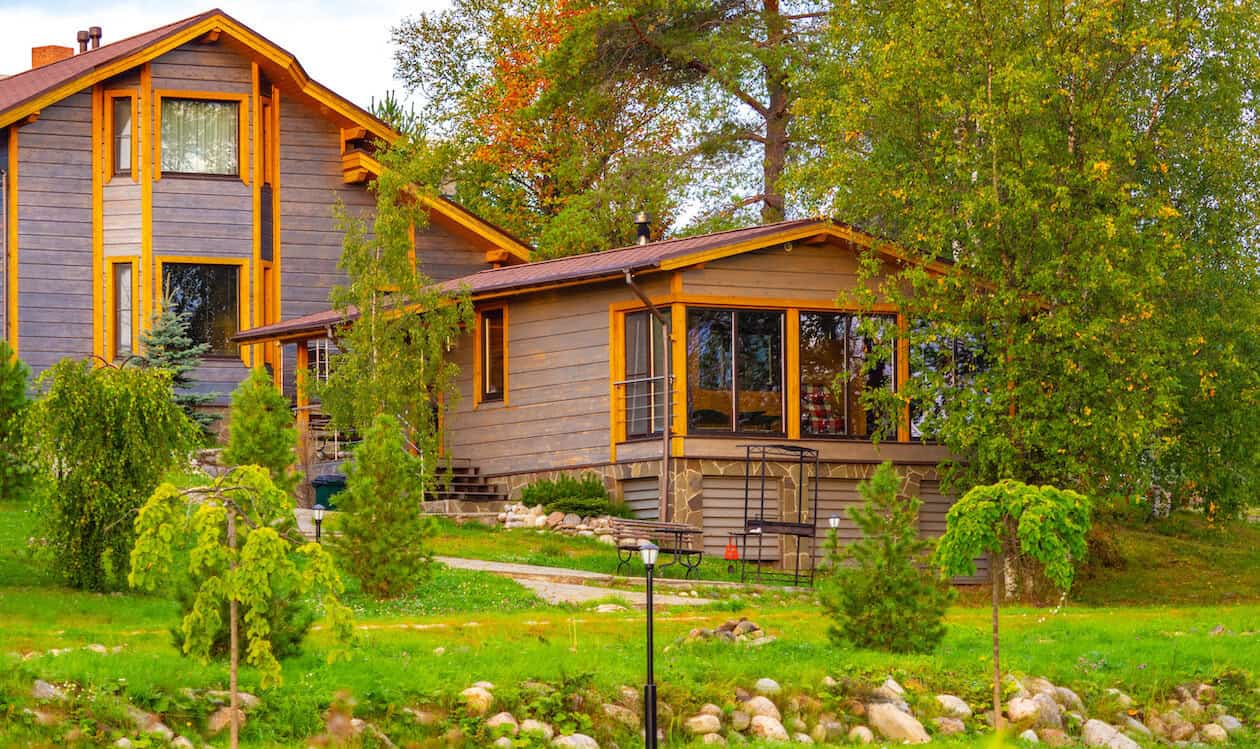
Constructing an ADA-compliant Accessory Dwelling Unit (ADU) involves meticulous planning, adherence to local regulations, and thoughtful design to ensure accessibility, safety, and comfort. Using a timber frame from Timber Frame HQ ensures durability and aesthetic appeal, while their Ready-To-Raise™ Kits and Custom Design services make the construction process efficient and customizable. Here’s an in-depth guide to help you through the process.
Feasibility and Initial Planning
- Evaluate Your Property: Ensure your property meets local zoning requirements for an ADU. Check for restrictions on lot size, setbacks, and utility access.
- Define Your Goals: Determine the purpose of your ADU, whether it’s for housing elderly family members, generating rental income, or serving as an office space.
Design and Budgeting
- Hire an Experienced ADU Designer: Choose designers with ADU project experience. They should be knowledgeable about local regulations and proficient in maximizing small spaces.
- Develop a Schematic Design: Create a basic layout and floor plan, allowing for adjustments to meet your needs and budget.
- Design Development: Refine the schematic design with structural engineering and energy calculations. Finalize specifics like door and window placements, HVAC systems, and foundation types.
Permits and Regulations
- Obtain Necessary Permits: Submit your detailed design for permits, ensuring compliance with zoning laws and building codes. This involves coordination with local building departments.
Financing and Cost Management
- Understand Cost Factors: Costs vary based on the type of ADU (attached, detached, conversion), site preparation, materials, permits, and professional fees. Budgeting carefully is crucial.
- Explore Financing Options: Look into loans and other financing options to fund your ADU project. Understand the loan process and requirements to secure funding efficiently.
Construction Process
- Hire a Contractor: Select a contractor with specific ADU experience. Discuss timelines, milestones, and project management to ensure a smooth construction process.
- Begin Construction: Start with site preparation, followed by framing, roofing, and installation of utilities (plumbing, electrical, HVAC). Regular communication with your contractor is essential to monitor progress and address issues.
ADA Compliance and Accessibility
- Accessible Entrance: Include a no-step entry with a gentle slope leading to the front door. Ensure the door is wide enough for a wheelchair (at least 36 inches). Consider installing a covered entry to protect against weather.
- Spacious Interior: Design open floor plans with wide hallways (at least 36 inches) and ample turning space (60 inches in diameter) in living areas to accommodate mobility aids. Open layouts not only facilitate movement but also make smaller spaces feel larger and more inviting.
- Accessible Kitchen: Install low countertops, use lever handles on cabinets and doors, and position appliances at accessible heights.
- Safe Bathroom: Install grab bars in the shower and near the toilet, use a no-threshold shower, and provide a built-in or fold-down seat in the shower.
- Non-Slip Flooring: Use non-slip, low-maintenance flooring materials throughout the ADU to prevent falls. Hardwood, tile, vinyl, or laminate flooring are good options over carpet, which can be difficult for wheelchairs and walkers to navigate.
- Lighting and Controls: Incorporate adequate lighting with easy-to-reach switches. Motion-sensor lights and voice-activated features can be beneficial for visually impaired or mobility-challenged individuals.
Additional Considerations
- Emergency Features: Install an emergency response system for added safety. Ensure there are backup power options for medical equipment if needed.
- Universal Design Principles: Employ universal design principles to make the space usable by people of all ages and abilities. This includes features like wider doorways, no-threshold entries, and easy-to-operate fixtures.
Conclusion
Building an ADA-compliant ADU is a significant investment that provides housing solutions for family members, rental income, and increased property value. By following these steps and leveraging experienced professionals, you can ensure a successful ADU project that meets accessibility standards and offers a comfortable living environment.
Timber Frame HQ Solutions
Ready-To-Raise™ Kits
Timber Frame HQ offers Ready-To-Raise™ Kits that are designed for effortless assembly. These kits come pre-engineered and precision-cut, ensuring a seamless construction process. They can be customized to include ADA-compliant features such as wider doorways, no-step entries, and accessible kitchens and bathrooms.
Custom Design and Engineering
For those looking for a personalized solution, Timber Frame HQ provides Custom Design and Engineering services. This allows you to tailor your timber frame ADU to meet specific ADA requirements, ensuring that the space is both functional and accessible for your grandmother.